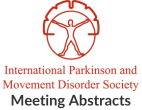Motor Symptoms in Patients with Parkinson’s Disease – Correlations with Cerebrospinal Fluid C-Reactive Protein
Objective: In this study, we intended to investigate the association between severity of PD motor symptoms and the cerebrospinal fluid (CSF) levels of CRP using…Combined administration of A2A receptor antagonist and 5-HT1A/1B receptor agonist reverses neuroinflammation in the 6-OHDA model of Parkinson’s disease
Objective: To investigate whether in a model of Parkinson's Disease (PD), an early treatment with the serotonin 5-HT1A/1B receptor agonist eltoprazine and the adenosine A2A…A post-mortem and in vivo study of neuroinflammation and Toll like-receptors in Parkinson’s disease
Objective: To investigate inflammatory change and Toll-like receptor (TLR) expression in human post-mortem Parkinson’s disease (PD) brains and to test the efficacy of TLR-blocking agents…Tear tumor necrosis factor-alpha levels in patients with Parkinson’s disease: The effect of deep brain stimulation
Objective: To evaluate tear tumor necrosis factor-alpha (TNF-α) levels in samples of two Parkinson’s disease (PD) patients treated with subthalamic nucleus (STN) deep brain stimulation…Neuroinflammation in the substantia nigra is triggered by synucleinopathy and precedes nigral degeneration
Objective: To determine the relationship between synucleinopathy, neuroinflammation and nigrostriatal degeneration using the rat α-syn PFF model. Background: No therapy exists to halt or slow…Impacts of CSF kynurenine pathway on neuroinflammaion in patients with Parkinson’s disease
Objective: To investigate the interaction between the KYN pathway and the neuroinflammation in PD. Background: In Parkinson's disease (PD), some pathologic mechanisms are reported such as mitochondrial dysfunction, inflammatory reaction and oxidative stress. Inflammatory cytokines are noticed as one of an important mediator of inflammatory reaction in the central nervous system (CNS). Kynurenine (KYN) pathway is also known to play an important role for degradation of oxidative stress in the CNS. Disproportion of KYN pathway can act neurotoxically and induce several neurological diseases including PD. In metabolites produced from this pathway, 3-hydroxykynurenine (3-HK) and quinolinic acid are as neurotoxic and kynurenic acid (KYNA) is neuroprotective. Methods: We could recruited 20 patients with PD (age; 57-80 y, median; 69.5 y) and 13 controls (age; 23-83 y, median; 75.0 y). Clinical severity was evaluated with Hoehn and Yahr staging.Samples of the cerebrospinal fluid (CSF) were obtained between 9:00 and 10:00AM after overnight bed-rest and before breakfast in PD patients. Control CSF were corrected from normal pregnant women on their lumbar anesthesia ante partum who had no neurologically abnormal condition confirmed by neurological examination and neuroimagings in advance. All CSF samples were promptly cryopreserved in a deep freezer (-80 ℃).CSF levels of KYN or 3-HK were measured using with the high-performance liquid chromatography coupled with the electrochemical detector. CSF levels of IL-6, IL-1β, TNF-α and IFN-γ were also measures using with an ELISA. Statistical analysis was performed and the significance level was set at p<0.05.This study was carried out after approval in our university ethical review board and written informed consents from all participants. Results: CSF levels of KYN in PD and control were 22.6 to 90.3 nM (median; 49.0 nM) and 9.5 to 51.4 nM (30.5 nM), respectively. CFS levels of 3-HK were 0.2 to 13.3 nM (4.25 nM) and 0.001 to 3.96 nM (1.55 nM), respectively. These were significantly higher in PD than in control (p<0.05). These were still statistically significant after normalization to CSF levels of triptophan(p<0.05).There was a positive correlation between the CSF levels of 3-HK and TNF-α (r=0.54,p=0.055). Conclusions: We could suggest that elevated CSF levels of KYN and 3-HK and positive correlation between 3-HK and TNF-α in patients with PD is associated with neuroinflammation in the CNS.Anti-synuclein alpha antibodies and IL-1β at Parkinson Disease (PD).
Objective: Determine a correlation between the levels of anti-synuclein alpha antibodies and IL-1β at serum and CSF of patients with PD. Background: PD is a…Dural lymphatic vasculature in human superior saggital sinus: the brain drain
Objective: To provide independent validation in human dura obtained at autopsy of the reported presence of dural lymphatic vessels. Background: Two recent studies have challenged…Evaluation of CSF cytokine profiles in people with Parkinson disease and age-matched controls.
Objective: To investigate the levels of cytokines in the cerebrospinal fluid of subjects with Parkinson disease (PD) and matched healthy controls. Background: Neuroinflammation is thought…[11C]PK11195 PET Imaging Reveals Neuroinflammation in Dementia with Lewy Bodies: NIMROD Study
Objective: To determine if subjects with dementia with Lewy bodies(DLB) have increased microglial activation in vivo compared to matched healthy controls as assessed using PET…
- « Previous Page
- 1
- …
- 16
- 17
- 18
- 19
- 20
- …
- 22
- Next Page »
